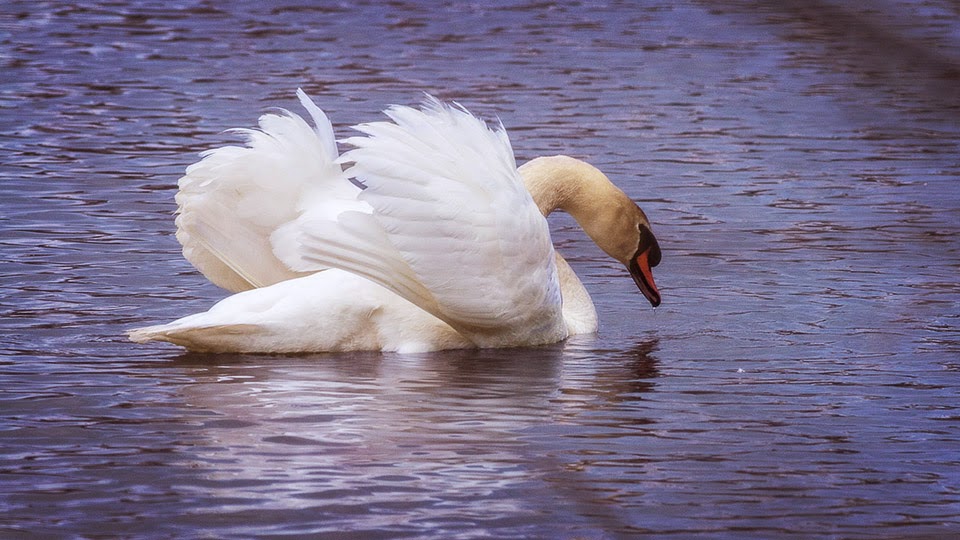Mute swans are native to Europe and Asia and were introduced into the United States. It is not as vocal as the other species of swan, thus it's name. Of the seven species of swan, only two are native to the U.S. — the Tundra and Trumpeter swans. The bright orange bill and black knob make the Mute Swan easily recognizable.
It is hard to believe ice out was only a week ago.
Photo tip: If a swan is close and you to need move yourself or the camera, wait until it's head is underwater and move, stopping when it raises it's head back out of the water. In that way, it may not even realize you are there. You can do the same with any waterfowl that either sticks it's head underwater or dives.
Mute Swans are admired for their regal appearance, but they become very aggressive when they are nesting. Mute Swans in Maryland come from five birds that escaped from a facility in Talbott County in 1962. The last count of Mute Swans I know of was 1999 when the number had reached 3955.
Mute swans are the largest birds in Maryland. On average, adults weigh 20-25 pounds and have a wing span of nearly seven feet! I had the privilege of seeing this swan take off twice on this visit. I did not realize it, but they also run across the water when they are landing until the slow down enough to land. They "walk on water" when landing as well as taking off. It reminds me of trying to stop a runaway train.
Nesting begins in March or early April. Mute swans nest very close to water, usually on small islands, along isolated shorelines, or in shallow marshes. The nest itself is a large mound of vegetation, made of rushes and coarse grasses, about 4 - 6 feet in diameter. In this image you can see a swan in the tall grass and she appears to be sitting on a nest. Swans mate for life, but I have never seen two birds in the month or so I have been visiting this pond.
The classic pose shown in this image and a couple of others is called busking. The wings are half raised and the swan curves it's neck in a threat display. They also paddle both feet at the same time which results in a noticeably jerky movement.
Male swan are called cobs and females are called pens. Other than the female being smaller, I don't know that there is any other way to tell one from the other. They mate for life and both share nesting duties. They often use the same nest for several years. Chicks are called cygnets. There are instances of colonial behavior — in other words, nesting in colonies — but the norm is for one pair to be highly territorial, not allowing any other pairs to nest in the area.
Due to the damage they cause to submerged grasses and crops as well as their ability to rapidly increase their numbers, they have been declared a non-native species and, therefore, unprotected by the Migratory Bird Treaty. Maybe that is why people use the term "swan song." Local laws offer some protection. There is a lot of interesting information on this bird and if you are interested, a Google search can be enlightening.








No comments:
Post a Comment